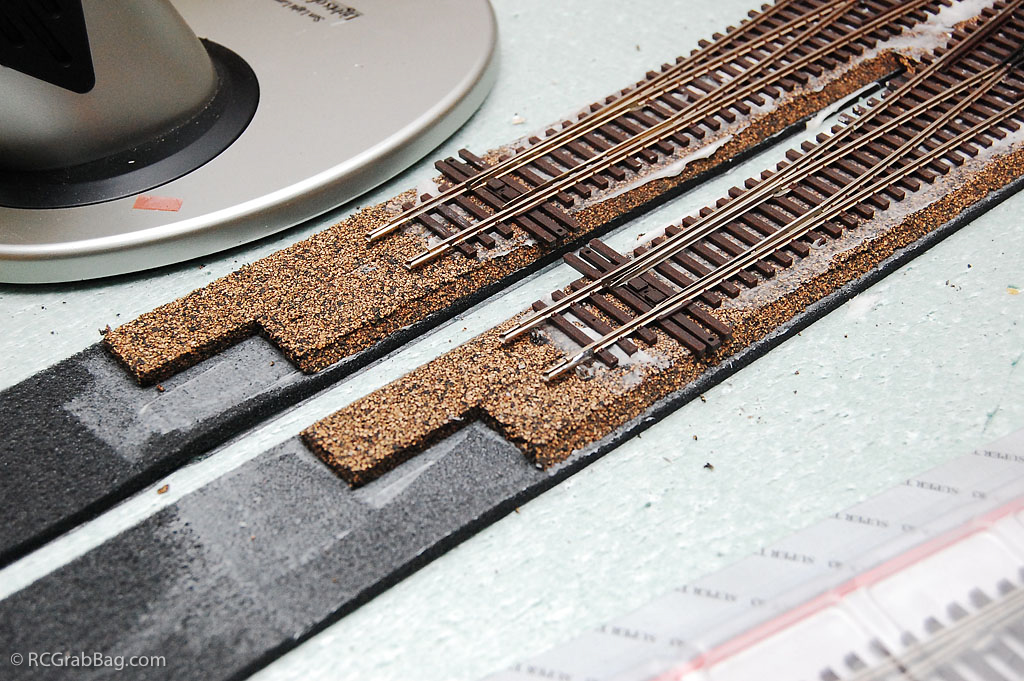
Tracklaying Methods On The N.E. and Everee
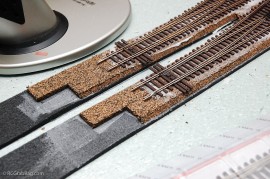
There are many methods for tracklaying on your layout. Here’s what I did and why.
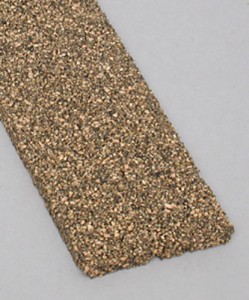
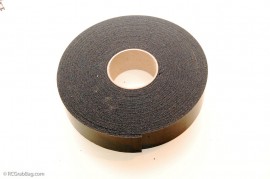
Most are familiar with cork roadbed (left), available from several manufacturers. It is probably the most popular roadbed material in use. While it has decent sound insulating properties, you may want to supplement the cork with a layer of “camper” tape (right). Camper tape is a foam material of varying widths and thicknesses, and is used when installing a camper top on the bed of a pickup truck. The tape forms a protective layer between the contact points between the pickup truck bed and the camper.

For my layout, I used 2-inch wide tape, approximately 1/4 inch in thickness. It provides a base that is perfectly wide enough for the cork roadbed.
An article in Model Railroader’s “How To Build Realistic Reliable Track” focused on creating the most sound-absorbing roadbed. The combination of cork roadbed and camper tape came out on top when compared with other materials and methods.
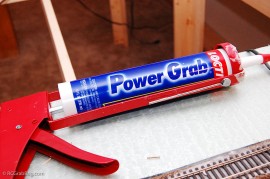
For gluing the various layers of track, cork and camper tape, I really like Loctite’s “Power Grab” caulk adhesive. It’s got a very high tack which keeps track and roadbed in place without any clamping, even on curves. It’s also water based for easy cleanup. Use a putty knife to spread a thin layer on your platform, tape and cork. It grabs immediately, and develops good strength in a couple of hours. Unfortunately, it doesn’t dry clear as some other adhesives do, but since you’ll eventually be covering all of the roadbed material with ballast, this doesn’t present a problem.
You may also like
Archives
- April 2025
- March 2025
- February 2025
- January 2025
- December 2024
- November 2024
- October 2024
- September 2024
- August 2024
- July 2024
- June 2024
- May 2024
- April 2024
- March 2024
- February 2024
- January 2024
- November 2023
- October 2023
- September 2023
- August 2023
- July 2023
- April 2023
- March 2023
- September 2022
- September 2013
- August 2013
- March 2013
- September 2012
- June 2012
- December 2011
- August 2011
- July 2011
- May 2011
- March 2011
- January 2011
- December 2010
- November 2010
- September 2010
- August 2010
- July 2010
- June 2010
- April 2010
- March 2010
- February 2010
- January 2010
- December 2009
- November 2009
- October 2009
- September 2009
- August 2009
- July 2009
- June 2009
- May 2009
- April 2009
- March 2009
- February 2009
- January 2009
- December 2008
- November 2008
- October 2008
- September 2008
- August 2008
- July 2008
- June 2008
- May 2008
- April 2008
- March 2008
- February 2008
- January 2008
- December 2007
- November 2007
- October 2007
- September 2007
Leave a Reply